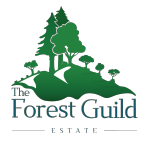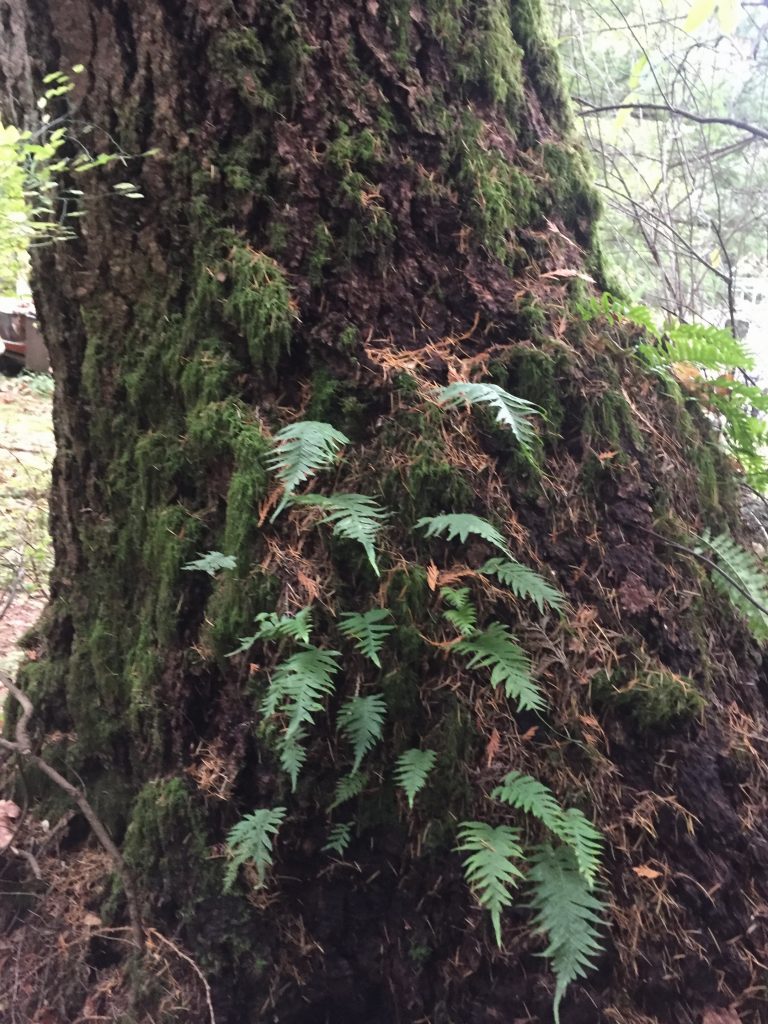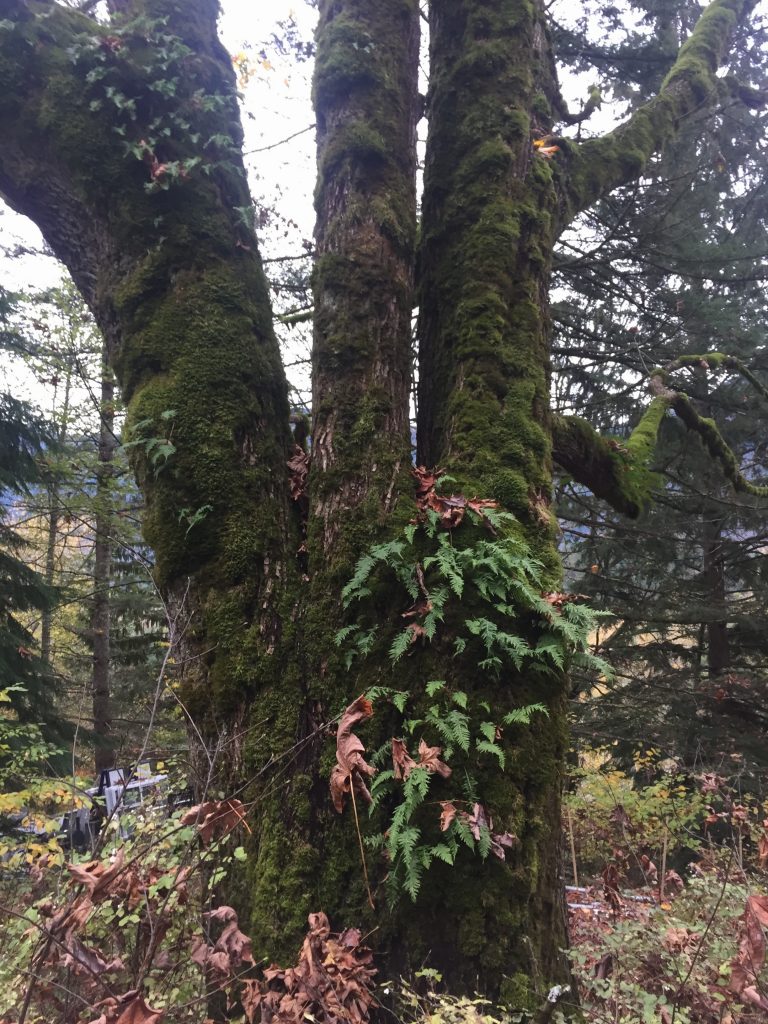
COMMON NAME: Licorice Fern
BOTANICAL NAME: Polypodium glycyrrhiza
PRONUNCIATION: pol-ee-PODE-ee-um gly-ky-RY-zuh
FAMILY: Pteridaceae
IDENTIFICATION: Tucked on the shady sides of many of our trees, especially on our Big Leaf Maples ~Acer macrophyllum, you will find lush moss and licorice ferns. This fern is an epiphyte which, unlike a parasite, does not cause harm to its host. Found in the Pacific Northwest, you may spot the licorice fern on rock faces or on rotting logs. Each fern or frond is separate from each other and is an individual. The licorice fern leaflets are a nice green that provides us with wonderful winter interest.

HARVESTING: You need to carefully and selectively harvest licorice root as it grows slowly. If you over harvest you will soon not have any for the next season. You can harvest licorice root in any season, but it’s known to taste the sweetest in the fall. Be careful not to remove the moss, but gently part it where the stem of the licorice fern goes into the moss. It’s best to take only newer roots; not only are they tastier but it leaves the older woodier ones to help keep your root system (rhizomes) established for the next years harvest. Other than the slow spread via rhizomes, this fern is also spread by spores in the wind.

USES: Children might be found sucking on the sweet licorice root itself, but there are many ways to prepare it. It is known to be an important medicinal, especially to First Nations. It is great for making teas–licorice tea happens to be my favourite! In case I didn’t mention it, it really does taste like licorice. Another way to process the root is by boiling it down to use for sore throats, coughs and colds.
INTERESTING FACTS: There is a drawback: licorice fern contains an enzyme called thiaminase, which is thought to deplete vitamin B.
Also, many ferns have been found to be carcinogenic so caution should be taken and used in moderation.
Licorice fern contains the compound polypodoside A, which is 600 times sweeter than sucrose.
BC SPECIES LIST: It is currently yellow listed on the BC List Status, which means that it is secure and not at risk of extinction.
REFERENCES:
E-FLORA BC: ELECTRONIC ATLAS OF THE FLORA OF BRITISH COLUMBIA
Becky is a Clinical Hypnotherapist, Registered Holistic Nutritionist, Landscape & Production Horticulturist, Arborist and budding Herbalist, who recognizes and specializes in the link between healthy soil, the gut and the brain. She also loves being the mom to her two wild and crazy kids Brooke & Connor whom keep her and her ever loving, creative husband Jay on their toes.
Becky is a Clinical Hypnotherapist, Registered Holistic Nutritionist, Landscape & Production Horticulturist, Arborist and budding Herbalist, who recognizes and specializes in the link between healthy soil, the gut and the brain. She also loves being the mom to her two wild and crazy kids Brooke & Connor whom keep her and her ever loving, creative husband Jay on their toes.
Design by NXNW.